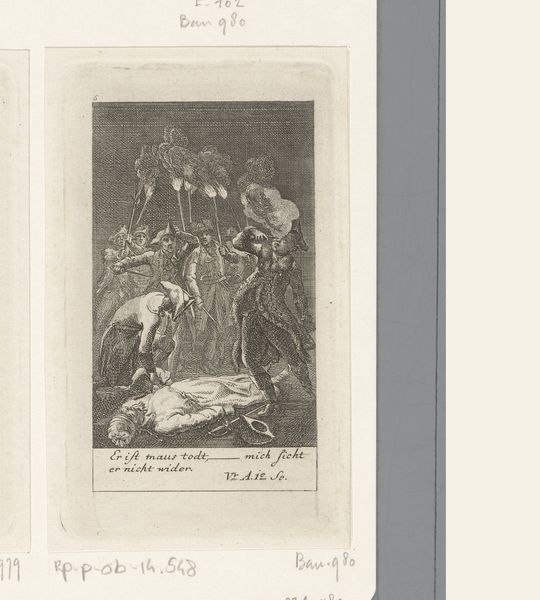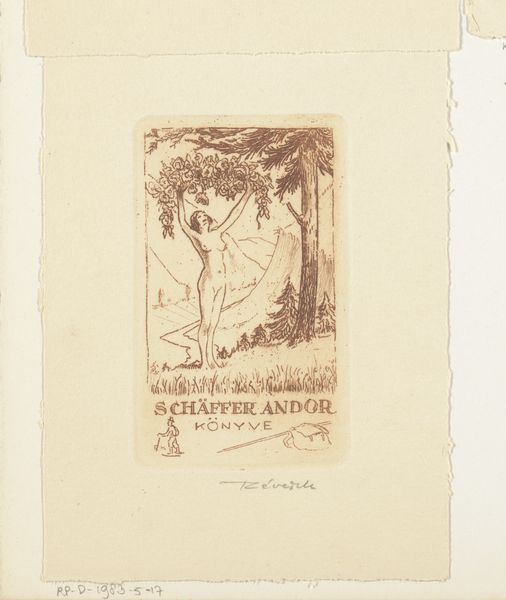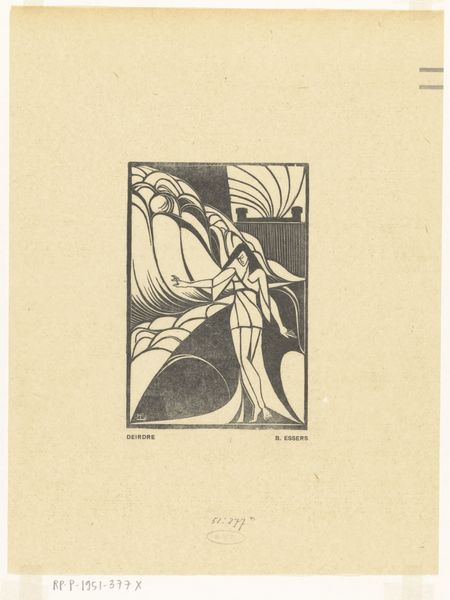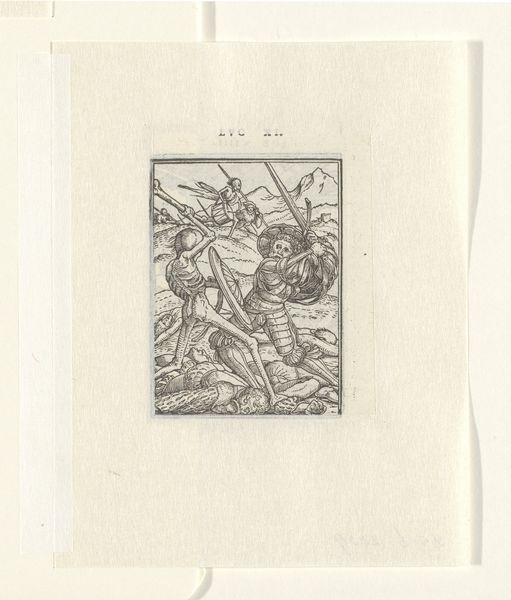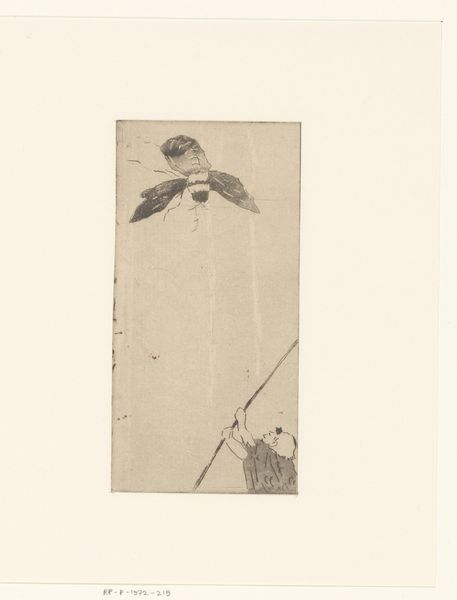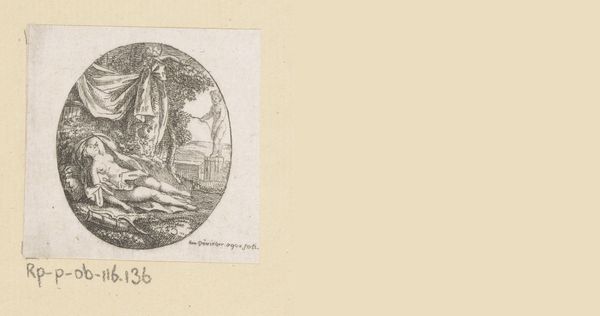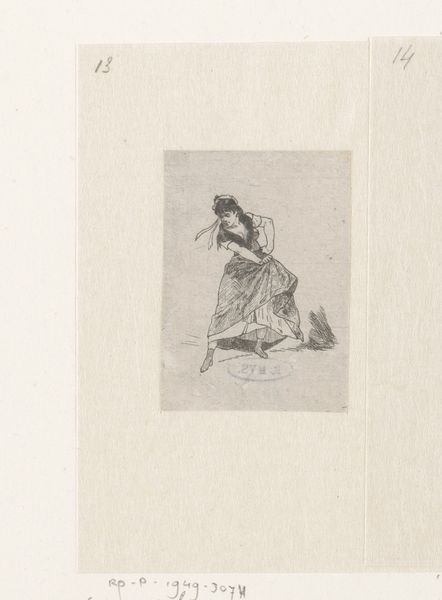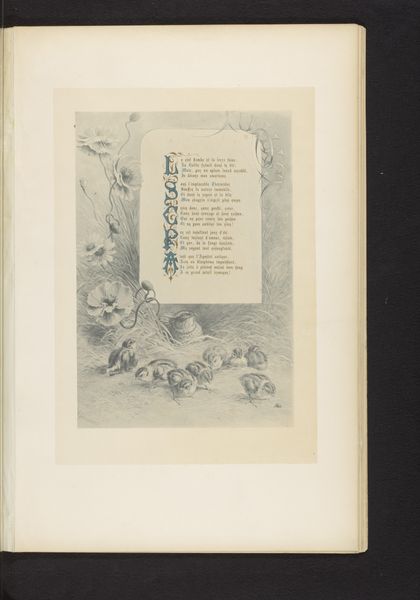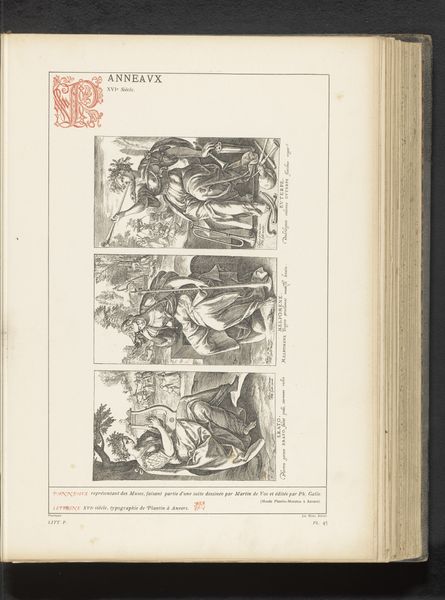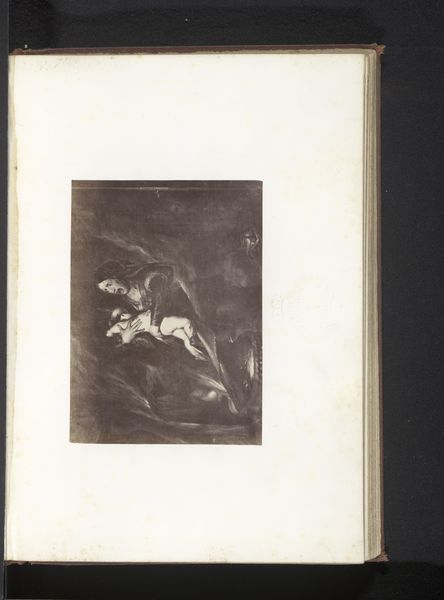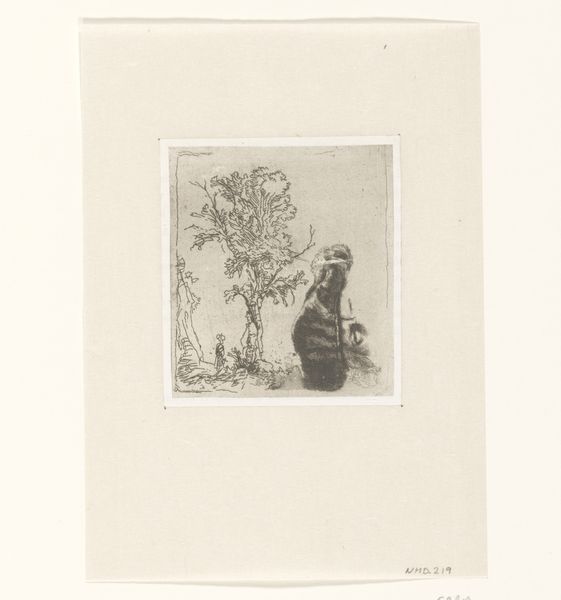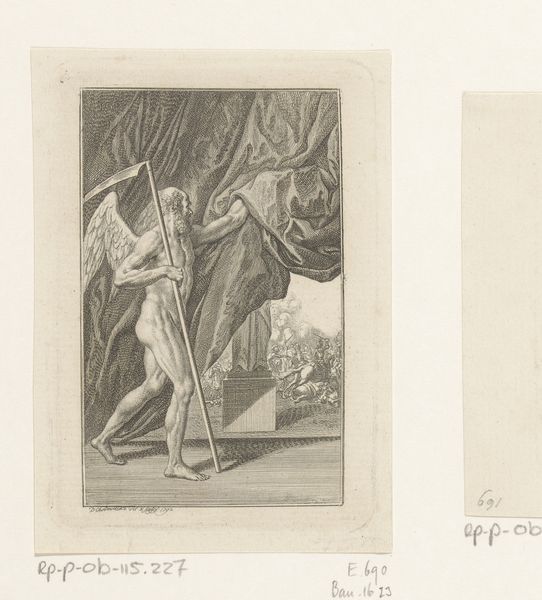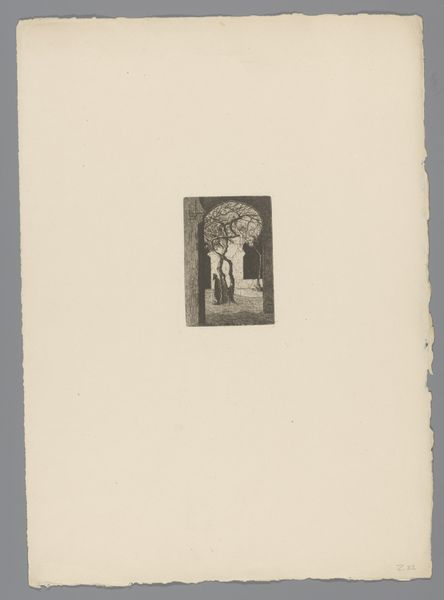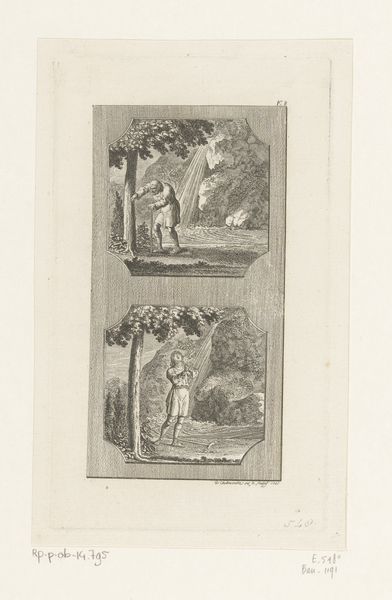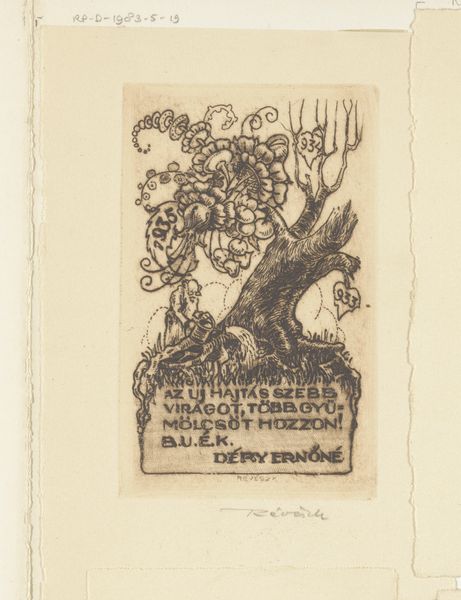
Dimensions: height 115 mm, width 40 mm
Copyright: Rijks Museum: Open Domain
This Ex libris, or bookplate, for Ilona Fejér was made by an anonymous artist in Hungary. We can date it to 1931 based on the inscription at the bottom. Bookplates like these were commissioned to signify ownership of books, and they offer a fascinating glimpse into the cultural value placed on literature and personal libraries during that time. The image employs a stark black and white contrast, typical of printmaking, to depict a kneeling figure engrossed in a book beneath stylized irises. The irises could be read as symbols of faith, hope, wisdom, courage, and admiration. What might these associations suggest about Fejér's personal values or aspirations? Understanding this artwork requires that we look at the history of book ownership and reading practices in early 20th century Hungary. Resources such as library catalogs, personal letters, and social histories could shed more light on the cultural significance of this seemingly simple bookplate. Only then can we begin to understand its place within the broader social and intellectual landscape of its time.
Comments
No comments
Be the first to comment and join the conversation on the ultimate creative platform.
